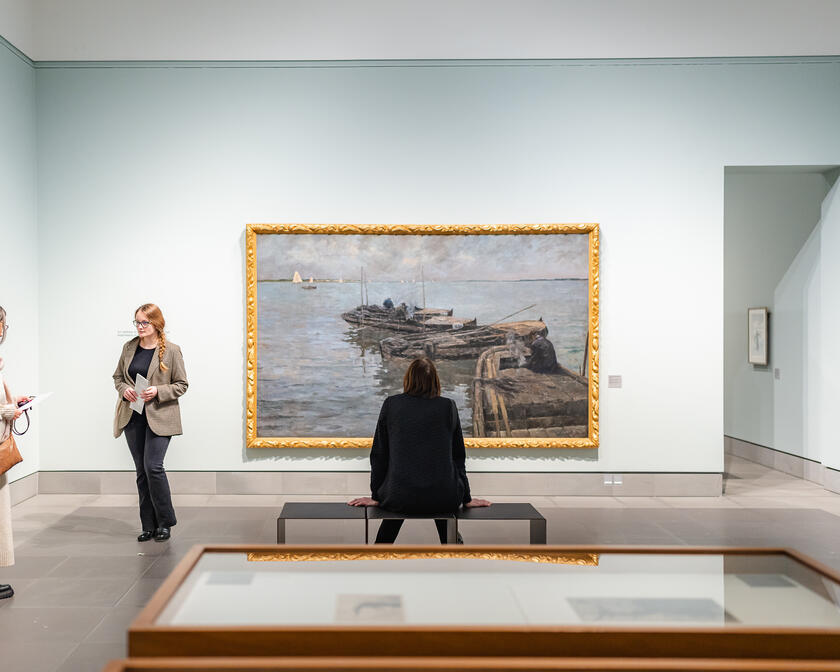
Which world-class works are not to be missed?
1. St. Jerome at Prayer – Hieronymus Bosch
As few as twenty paintings can be attributed with certainty to Hieronymus Bosch. One of these paintings is ‘St. Jerome at Prayer’, a work from the fifteenth century depicting the saint he was named after. We see Jerome who has withdrawn into the desert to detach himself from all earthly desires. He is praying, accompanied by a small lion and several other attributes. In 2016, the painting underwent a thorough examination and restoration which revealed the wonderful original colours and remarkable details. So just like Jerome found detachment, layers covering the painting were detached as well.
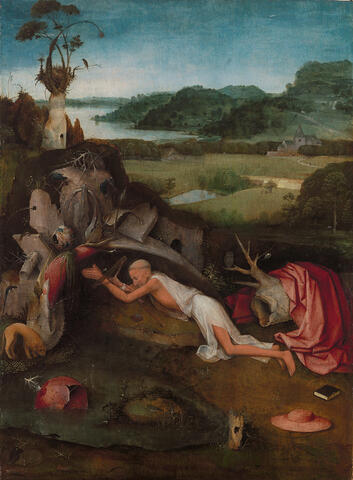
2. Christ Carrying the Cross – Hieronymus Bosch
Is it a real Bosch or not? Not every expert is convinced that ‘Christ Carrying the Cross’ was painted by Hieronymus Bosch himself. Some believe this work was created by a very talented contemporary or follower. Whoever painted it, it certainly captures the imagination. What looks like a chaotic jumble at first glance, is in fact a carefully constructed representation of the struggle between good and evil. We see the head of Christ in the centre, at the intersection of two diagonals connecting various figures. Surrounded by countless sinister faces, Christ’s suffering seems endless. However, Christ’s expression is serene: this conveys the message that good will prevail over evil, even in desolate solitude. This intriguing and even surreal painting is certainly more than worth a visit.
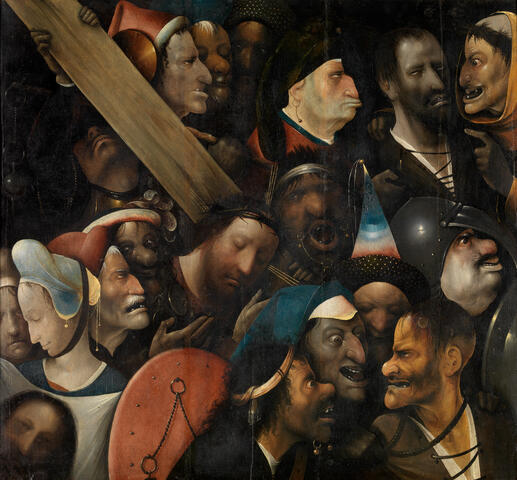
3. Jupiter and Antiope – Anthony van Dyck
When MSK purchased this painting in 1900, some board members found ‘Jupiter and Antiope’ a bit too risqué for female eyes. Of course, they did not mention their own eyes. In any case, Anthony van Dyck showed his virtuosity in this work. We see Jupiter, King of the Gods, accompanied by his symbol the eagle, spying on Antiope while she sleeps. At the time, the painting was primarily a tribute to fertility and a denunciation of debauchery. However, we can be sure that such mythological scenes also provided artists with an alibi to depict nudity without diffidence. After all, there is certainly an erotic element to this work. In any case, it was met with great acclaim: several versions were produced and even Rubens owned one.
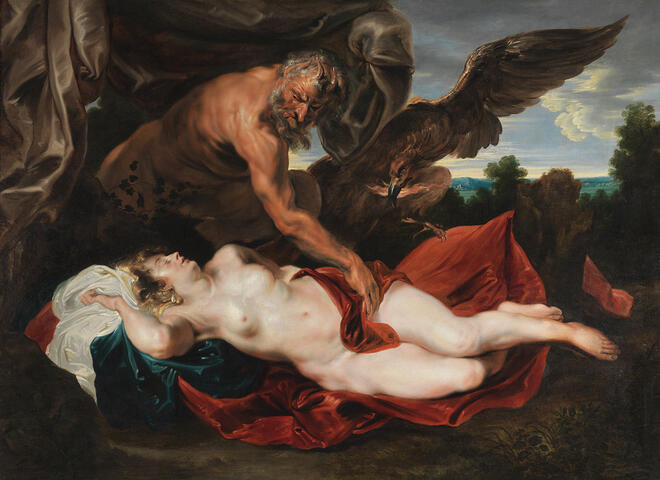
4. Wedding Dance in the Open Air – Pieter Brueghel the Younger
Have you ever wondered what a wedding party looked like in the sixteenth century? ‘Wedding Dance in the Open Air’ gives us a vivid depiction. In the forefront, you can see dancing couples; you can easily imagine the bagpipe music. In the background, you can see the bride sitting at a table with a platter in front of her. She is surrounded by curious wedding guests who want to know how much money the bride and groom got on their big day. “Money makes the world go round” was a saying that applied even in Brueghel’s time. This painting is probably a copy of a lost original painted by Pieter Brueghel the Younger’s father, Pieter Brueghel the Elder.
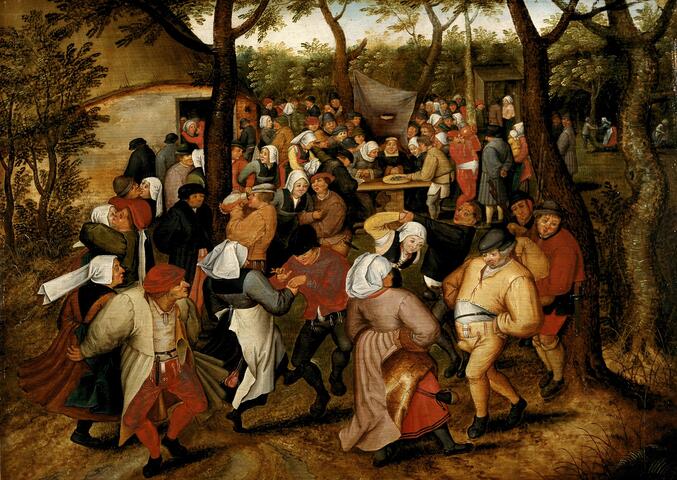
5. Portrait of a Kleptomaniac – Théodore Géricault
Théodore Géricault painted this intimate Portrait of a Kleptomaniac around 1820 at a Parisian hospital where one of his friends worked as a doctor. It is part of series of portraits Géricault made at the hospital, only five of which have been preserved. When this painting was auctioned off in Paris, it was titled ‘Le fou assassin’. Later on, however, Géricault’s notes revealed that ‘Portrait of a Kleptomaniac’ was a more appropriate name. However you call it, it sensitively depicts an encounter between two individuals. This is one of the highlights of the MSK collection.
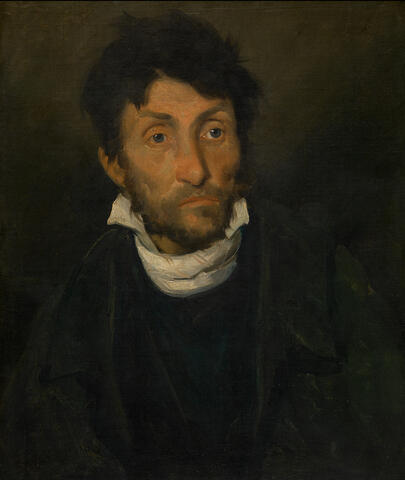
6. Family Portrait – Cornelis de Vos
This masterpiece is included in the LGBTQ+ tour of the museum because it makes you think about gender stereotypes. Can you make out the gender of the children in this portrait at first glance? Young boys and girls used to be clothed exactly the same for the sake of convenience. You can probably guess that the two children on the left are boys because they’re next to their father and not wearing a necklace with crucifix. Painter Cornelis de Vos was a friend of Rubens and mastered different genres. Group portraits were his speciality and he was particularly adept at portraying children. He does not depict them as small grown-ups, but shows them as spontaneous and open as in real life.
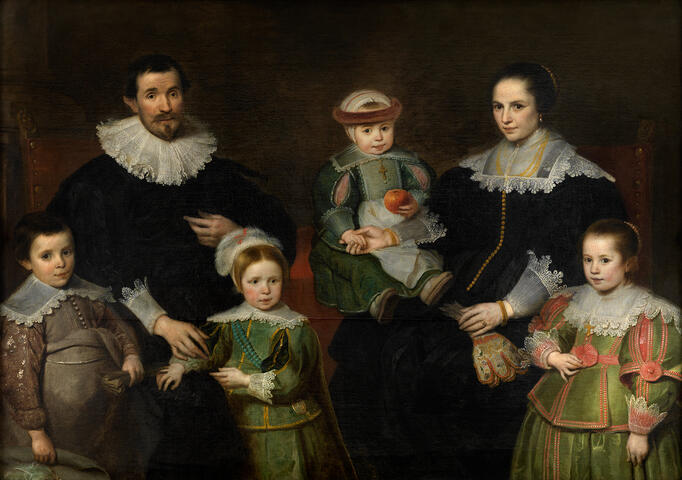
7. Interior or A Loving Couple – Léon De Smet
You may have to look carefully to see the loving couple in this painting from the collection. Do you see them, a bit hidden in a dark corner, locked in an ardent embrace? What a contrast with the light-coloured room they are in. Léon De Smet used a refined palette, a impressionistic touch and a well-balanced composition. You become absorbed in the dreamlike atmosphere when you’re looking at the painting. For art connoisseurs: the artist integrated two of his own paintings in this work. They are hanging on the wall. And on the mantelpiece, you can see a well-known sculpture: ‘The Little Relic Bearer’ by George Minne. So be sure to stop at this work and be swept away by the serene poetry characteristic of De Smet’s oeuvre.
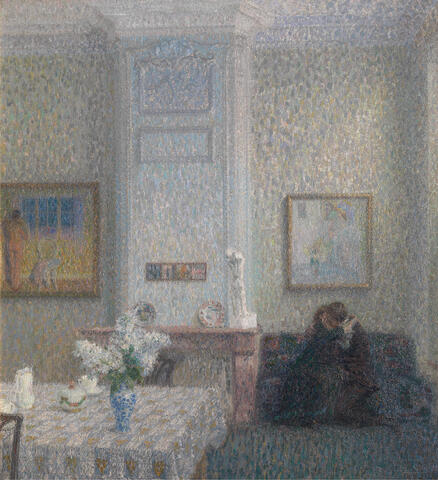
8. Fugue – Gustave Van de Woestyne
‘Fugue’ is one of the most expressionistic works by painter Gustave Van de Woestyne and one of the highlights of MSK. It hasn’t lost its appeal, even after nearly a century. ‘Fugue’ shows a farmer in his environment. What are the elements that shape and give meaning to his life? His home, the church, animals, nature. All components are highly stylised and broken up in contrasting planes of colour. The painting’s composition can be compared to a collage. Quite modern, it’s recognizable and surprising at the same time. A wonderfully abstract and unique piece in the museum.
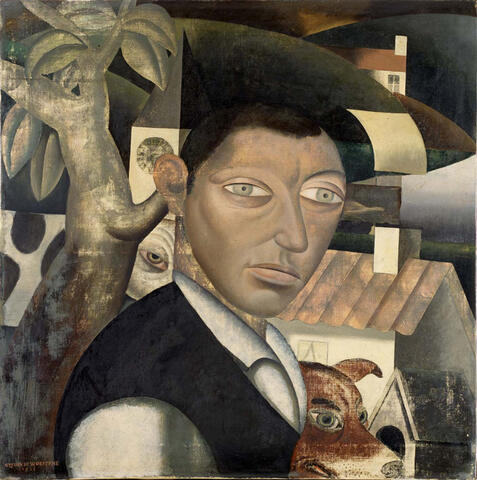
9. A Spaniard in Paris, or Portrait of the Painter Francisco Iturrino – Henri Evenepoel
We conclude with a masterpiece by Henri Evenepoel, the only work the painter sold to a museum in his lifetime. ‘A Spaniard in Paris’ is a portrait of Spanish painter Francisco Iturrino, who was a friend of Evenepoel. We see a monumental figure dressed in a cape who seems to step out of the picture. The setting is bohemian Paris, with a bright red Moulin Rouge in the background. This painting looks modern, with its bold composition, distinct style and foreshortening. Old photographs show us that the figure of Iturrino was painted first and the background last. Come and take a close look!
These are nine good reasons to pay a visit to MSK. But there are many more, of course. Come and discover them for yourself.
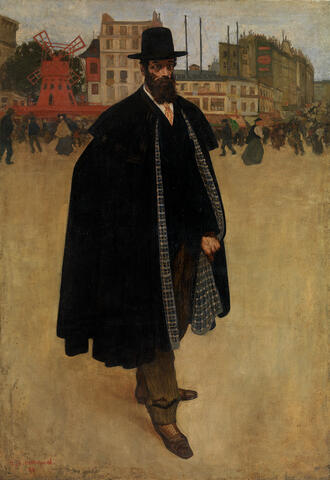
Online ticketing Museum of Fine Arts
Prefer not to wait in line at the ticket booth? Want to be sure you can discover the Museum of Fine Arts when you want to? Then book your tickets online in advance and enjoy your visit to the fullest.